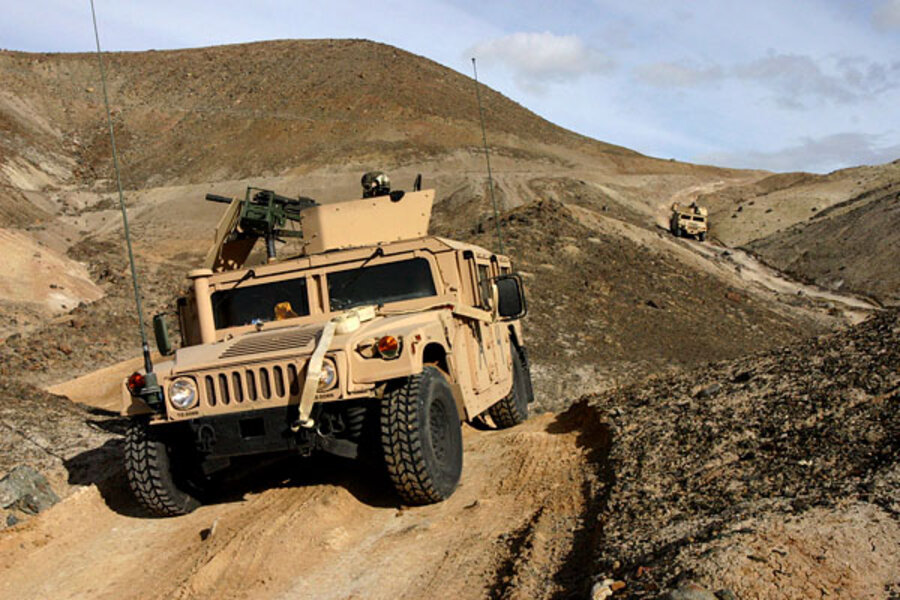Nevada depot blast: Was exercise that killed seven really necessary?
Loading...
| Washington
The deaths of seven US troops – and the injuries of several others – in a live-fire training exercises at a military base in Nevada Monday raises questions about just how necessary such training is for troops in an era of modern warfare.
Though the cause of the fatalities, which happened Hawthorne Army Depot at 10 p.m. local time, is still under investigation, it appears that a 60-millimeter mortar shell exploded as Marines were preparing to fire the shell.
Would they get the same experience using blank rounds that still simulated the noise and confusion of battle, for example? Senior US military officials say the answer to that question is "no." Though such exercises entail some measure of risk, they are vital, the officials suggest.
Some argue that the danger inherent in live-fire exercises is key to instilling a sense of fear, so that troops can come to envision in some small measure what battle will be like. Others contend that using live rounds during training hones troops by making them more focused during drills.
In the end, the point of training is to do everything possible to make the men and women of the military prepared to go to war, and live-fire exercises are seen as being a crucial part of that process.
“We don’t want war to be the first time a soldier has handled – and is comfortable – with live rounds,” says Lt. Col. Jerome Pionk, the Army’s team chief for weapons, environment, and technology.
“It’s not so much the sense of danger but the awareness of responsibility that is heightened during live-fire exercises,” adds Colonel Pionk.
This experience breeds confidence, Pionk says. He recalls his first live-fire training exercise in the Army: “I didn’t come from a hunting culture,” he says.
“When you get out there with blanks, you know it’s not real. When you have that live ammo, though, there’s a sense of heightened responsibility,” he says. “You get absorbed in that. You think, ‘I’ve got live bullets here. I’ve got to take this seriously.’ ”
What’s more, there are often physical differences in weight between live munitions and training rounds, military officials add.
To avoid accidents, there are a number of safety measures that precede live-fire exercises, Pionk says. “When I was an infantry platoon leader, you did a dozen rehearsals before you were issued live ammo” for an exercise.
Such rehearsals without live rounds are standard even if a unit is returning from Afghanistan or “if you have nothing but senior guys – extremely well-trained guys – before they get locked-and-loaded with live ammo,” he adds.
The number of live-fire exercises troops take part in vary with their military occupational specialties, but troops are generally required to do live-fire exercises at least once a year as part of their annual qualification requirements.
Hawthorne Army Depot, a base that is nearly 230 miles square and serves as an ammunition depot, is an ideal spot for live-fire exercises.
According to the depot’s website, the remote base in the heart of Nevada's mountainous desert offers a “realistic simulation of the situation in Afghanistan” for troops, including Special Operations Forces, who train there. This training includes live-fire exercises, often for troops preparing to deploy to war.
Even beyond live fire-training, military exercises generally involve risks, particularly as troops are preparing for ongoing wars.
Seven US troops died in February 2012 during a midair collision of two helicopters at Marine Corps Air Station Yuma, which sits along the jagged, rocky mountains and open desert of the Arizona-California border and is also meant to simulate the conditions in Afghanistan.
There were five such crashes in 2009, and another five in 2010.
A Marine spokesman says the fatal incident at Hawthorne is under investigation.






